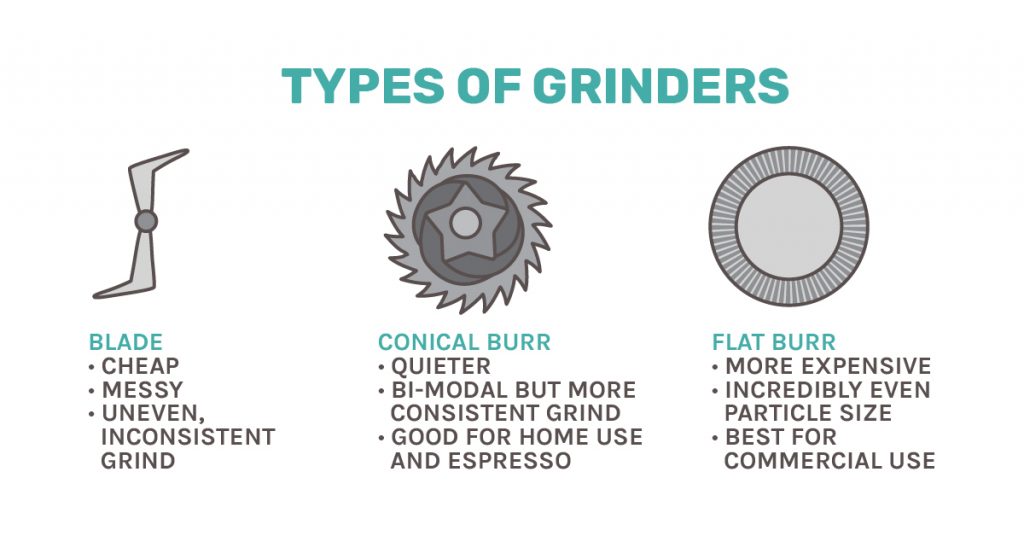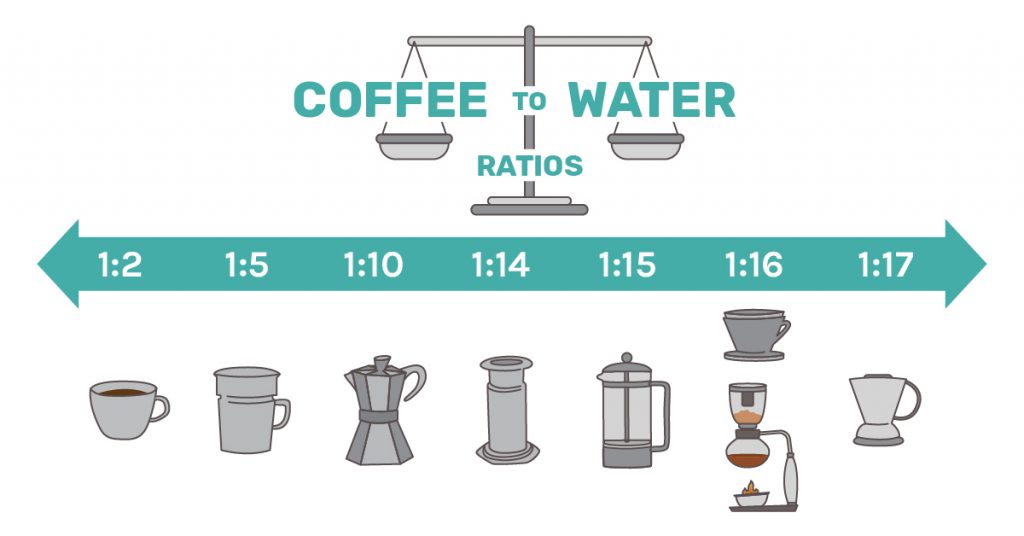Best Way To Make Coffee at Home: Discover Your Inner Barista
Who says that you can only get a good coffee from the coffee shop? If you’ve already ditched K-Cups and instant coffee and are looking to take your brewing up a notch, we’re ready to help you perfect your brewing process! By learning to understand each variable in the brewing process and following some professional tips, you will be making coffee like a world champion barista in no time.
Start your morning with the envy of all coffee drinkers: a balanced, flavorful cup of joe! Read on to learn all about the best way to brew the perfect cup!
How do you make coffee taste good at home?
Here are a few truths that you can’t get around:
Roast Your Own Beans
Unlike wine, roasted coffee beans don’t get better with age. On the contrary, they slowly lose more and more flavor due to the release of carbon dioxide and other environmental factors like humidity and UV rays. (1)
Related: the best coffee beans of 2020
Your roasted coffee is vulnerable to multiple elements: light, heat, moisture, and most of all, oxygen.
Whether whole or ground, can you imagine how long that bag of roasted coffee has been sitting on the shelf of your corner store for? If you want to enjoy all of the flavor and aroma nuances of your coffee, you should invest in a home roaster to begin your coffee journey with green beans and experiment with lighter and darker roasts.

Degas Your Coffee
Nope! Basically, you want your coffee to be fresh but… not too fresh. Let us explain. Once the roasting is complete, your coffee will start to degas and slowly lose CO2. While too much of this gas will spoil the taste of your coffee, some gas is good to preserve the coffee’s flavor and prevent it from going stale.
You should always store your roasted beans properly in air-tight containers, but wait around 12 hours after roasting before sealing them in order to avoid CO2 pressurization. Then, make sure you wait at least 24 hours before grinding them to let them release enough CO2 and develop their full-bodied taste. Don’t leave your roasted beans for longer than a week, though, or they’ll start losing their flavor and aroma.
Grind Your Own Beans
lacking that something special? Whether you’ve decided to roast your coffee beans (go for it!) or not, do yourself a massive favor and grab a grinder like one of these.
As we mentioned before, external agents affect roasted beans and, with time, they lose all their CO2. Pre-ground coffee is obviously not fresh. By switching to freshly-ground coffee you’ll enjoy the coffee’s full flavor and aroma. While it is possible to store ground coffee for a very limited time, we recommend grinding just before you brew. Don’t forget to allow your coffee to bloom in order to complete the degassing process.

When in the market for a grinder, remember that consistency is key. (2) Don’t butcher your beans with blade grinders that will result in an uneven mess and ruin your brew. Instead, invest in a good burr grinder that will ensure a consistent particle size. Check out this article to understand the difference between flat and conical burrs.
Choose Your Beans Wisely
Often throwing out lots of technical terms and exotic buzzwords, coffee bean packages can be quite confusing, so let’s simplify the two main categories of beans: single origin and blends.
Single origin beans are exactly what they sound like: they come from the same country, region or even the same farm and crop.
Each single-origin batch is unique and left as untampered-with as possible, hence why they’re coffee purists’ favorite choice. If you like to drink your coffee black, then you should definitely try single-origin beans.
Blends, on the other hand, are a mixture of beans coming from different places, countries, and crops. They tend to have a bad reputation because bigger roasters often keep a low percentage of good beans and mix them with lots of low-quality ones to skimp on the cost, resulting in a tasteless mess. However, that doesn’t mean that all blends are bland! On the contrary, smaller, dedicated roasters can create impressive combinations that balance high acidity with milder tastes. For coffee drinkers who like to add milk and sugar to their cup of joe, we recommend experimenting with blends.
Match Brew Method And Grind Size
Depending on the way you brew your coffee, you will need to select the correct grind size for your coffee. When the grind size doesn’t match the brew method, your coffee comes out either under-extracted (weak, sour and acidic) or over-extracted coffee (hollow and bitter). As a general rule, the shorter the extraction time, the finer the grind; the longer, the coarser. Espresso, for instance, requires a fine grind, while french press requires a coarse grind.

While our grind size chart is an excellent resource, there is still room for experimentation. Be creative and you may discover your perfect cup of coffee!
Optimize Your Water Quality
While the beans are obviously the stars of the show, water is naturally also an important factor. Brewing quality coffee requires good quality water. Spoiler alert: it’s not the water from your tap!
Water contains minerals that can enhance or spoil the final taste of your brew. Hard water is rich in calcium and magnesium which help extract more flavors from the coffee beans, but also have higher levels of impurities, odors and bad chemical elements like chlorine. On the other hand, distilled, soft water lacks minerals that bring out strong coffee flavors. (3) The best way to balance the hardness of your water is to use reliable water filters with activated carbon or charcoal. These filters that remove impurities and contribute desirable minerals to the water. Some coffee makers even feature reservoirs that are compatible with charcoal filters.
Related: coffee maker reviews
Use The Right Temperature
Every time we see someone boil a kettle and immediately pour its piping hot contents into a coffee maker we die inside a little, so let’s debunk a myth:
Good coffee is not made with boiling water.
Why? ‘Cause it would literally burn your beans and result in over-extraction! Obviously the water needs to be hot, but there is a delicate temperature range for achieving the best flavor. We recommend following the directions of the Specialty Coffee Association of America: (4)
…water temperature, at the point of contact with coffee, is recommended to fall between 200°F ± 5° (93.0°C ± 3°).
When you’re brewing manually, use a good gooseneck kettle that will allow you to select the correct temperature instead of boiling the water and, if you’re also planning on using automatic drip machines, consider one that is SCAA certified and will ensure the correct temperature range.
Get The Perfect Coffee: Water Ratio
The old adage “too much of a good thing” is as true for coffee dosing as it is for anything else. Using too much coffee in your brew will create a sour cup of java. On the other hand, using too little means thin, weak, and watery coffee.
Some good ratios are 1:15 for most immersion brewing methods and 1:17 for pour overs.
This means that you should add 15 or 17 g of hot water for each gram of coffee, e.g.: 20g/300g. As for your morning espresso, the ratio is much lower given that it’s a highly-concentrated shot of coffee: 1:2 is the golden recipe. (5)

You can obviously experiment with higher ratios for a stronger cup of coffee and lower for some weaker java, but we recommend tweaking this variable very carefully in order to avoid disappointment. And make sure you use a reliable coffee scale rather than trusting scoops and teaspoons!
Maintain Your Equipment
Would you buy a car, use it every day and never look after it again? No, and you shouldn’t do so with your precious coffee equipment either! Regular maintenance keeps your brewer in top shape over time, ensuring that your coffee tastes just as good a year or two after purchase as it did when you bought the machine!
From chuff in your roaster to oils in your grinder and coffee maker, frequent use results in build-ups of substances. Make sure you remember to rinse and descale the removable parts of your espresso or coffee machine, clean the burrs of your grinder, dismantle the filter of your French press and give it some daily TLC.
Experiment And Be Creative!
Nobody was born a skilled barista champion! Brewing coffee comes with a learning curve that is steeper with some methods than others.
Recommended ratios, grind sizes, and temperatures are great starting points, but don’t be afraid to get creative and tweak one variable at a time until you find the best recipe for your taste. It’d also be a mistake not to log your brews! That way you can keep track of the results of each delicious experiment.
Coffee extraction is a delicate process, but by following our simple tips and looking after your brew from bean to cup, you’ll be able to reward yourself with great coffee and the pride of having made it yourself. Make it a goal to try new brew styles regularly and see where it leads you!
FAQs
What method makes the best coffee?
There isn’t one objective best brew method, but after some experimentation you may discover which is your favorite. Full or partial immersion, high or low pressure, fast or slow, each different method has something unique to offer in terms of body, flavor, and aroma. In general, we recommend staying away from coffee capsules and finding a coffee maker that allows you to make the most of your fresh coffee grounds. Read this article for an easy and handy breakdown of every brew method.
Does ground coffee need to be refrigerated?
No, ground coffee doesn’t need to be refrigerated and doing so can actually spoil its taste given the temperature fluctuation and humidity of the refrigerator. It’s always best to store your coffee grounds in opaque, airtight containers that are kept in a cool and dry place like a pantry or a cupboard.
Can you roast coffee beans in a popcorn popper?
Yes, technically you can roast coffee beans in a popcorn popper, but you’d usually get better results roasting them in a pan, grill or oven. It is also worth noting that popcorn poppers are not built to roast coffee beans, so using them for that purpose will void the warranty. We recommend roasting beans in an actual coffee roaster, but you can find out more about each roasting method here.
References
- Tark, S. (2019, April 9). How to Store Roasted Coffee & Prolong Its Freshness. Retrieved from https://www.perfectdailygrind.com/2019/04/how-to-store-roasted-coffee-prolong-its-freshness/
- (n.d.). Coffee Grind Types. Retrieved from https://www.whittard.co.uk/discover/coffee-knowledge/Different_grinds.html
- (2019, February 8). In search of a better brew: The best water for coffee. Retrieved from https://mitte.co/2019/02/08/in-search-of-a-better-brew-the-best-water-for-coffee/
- (2015, December 23). SCAA Standard | Golden Cup. Retrieved from https://scaa.org/PDF/resources/golden-cup-standard.pdf
- (n.d.). How much coffee should you use? Brewing ratio basics. Retrieved From https://www.encorecoffeeco.com/blogs/coffee-school/how_much
